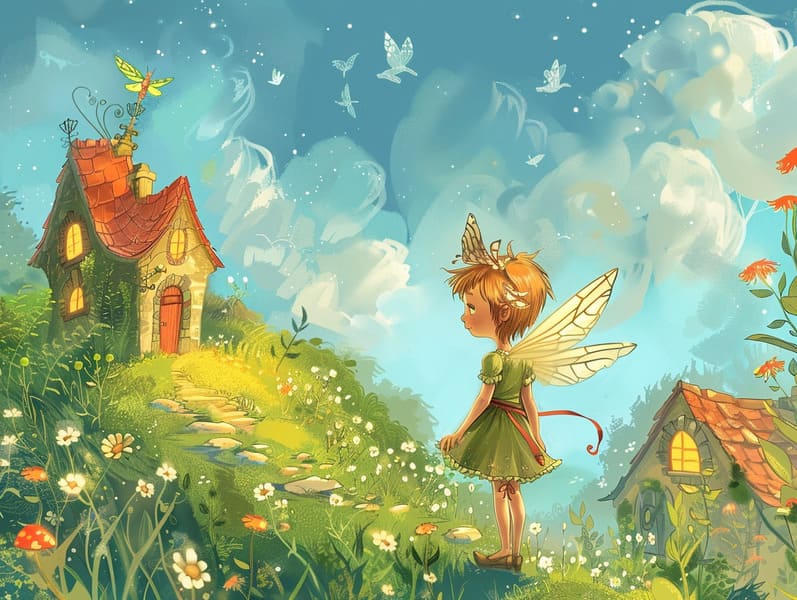A Brief History of Best Fairy Tales and Its Persistent Magic.
A Brief History of Best Fairy Tales and Its Persistent Magic.
Blog Article

Fairy tales for kids have old origins. These stories have been shared from one generation to the next long before they were ever transcribed. They were born from a variety of cultures, including Asian traditions. They were initially transmitted among mature audiences, often carrying themes and messages relevant to the societal norms and beliefs of the time.
The Brothers Grimm, Jacob and Wilhelm (the Grimm brothers), were among the first to compile and release many of these beloved tales. Their compilation, "Grimm's Folk Tales," included narratives like "Cinderella," "The Story of Hansel and Gretel," and "Snow White," which have since become classics in the world of beloved fairy tales. Similarly, Hans Andersen's imaginative stories, such as "The Mermaid's Tale," and "The Duckling's Story," have floated into hearts worldwide, solidifying their place in the pantheon of treasured fairy tales.
Despite their historical roots, classic fairy tales remain as applicable as ever, especially as children's night stories. These fantastical tales are now available in different formats, including vividly illustrated books, charming animations, and online fairy tales.
Their ongoing significance can be credited to several fascinating points:
Valuable Lessons: Timeless fairy tales often provide important moral lessons. Stories like "The Shepherd Boy and the Wolf" teach the significance of sincerity, while "The Tortoise and the Hare" exemplify the virtues of persistence and meekness. These tales offer kids clear distinctions between good and bad, molding their moral compass in a gentle yet deep way.
Compassion and Insight: Traditional fairy tales frequently feature individuals facing challenges and struggles, prompting young listeners to feel with their struggles and rally behind their triumphs. For instance, "Beauty and Her Beast" points out the importance of seeing beyond the surface to know the true essence of a character, advancing sympathy and recognition.
Cultural Recognition: Many timeless fairy tales are rooted in the cultural contexts from which they arose. Reading these tales can provide captivating looks into different cultures, promoting a sense of global awareness and respect.
Fantasy and Imagination: The fanciful elements in ancient fairy tales—mythical entities—kindle children’s imaginations. These tales guide readers to extraordinary realms, kindling imaginative dreams and a sense of awe that remains a lifetime.
Classic fairy tales are not only charming but also pedagogical. They function as fantastical tools in cultivating various mind and heart abilities in kids. When classic fairy tales are recited, they cultivate speaking abilities by bringing new word meanings and complex sentence structures. This practice also cultivates listening skills and attention span, as kids remain attentive, enthusiastic to see what happens next.
Furthermore, analyzing the themes and characters of old fairy tales can strengthen thought processes and cognitive skills. The young are educated to see patterns, make predictions, and figure out cause and effect. These examinations also ease children communicate their thoughts and feelings, adding to their emotional intelligence.
In today’s digital age, the availability of internet fairy tales has made these fairy tales more attainable than ever. Web-based platforms and software make available large libraries of traditional fairy tales that can be enjoyed or heard anytime, anywhere. Fairy tales narrated are particularly liked, giving an interactive method for young readers to enjoy these charming stories. Voice books and read-to-me stories carry characters and settings to life, often augmented by mesmerizing melodies and background music that intensify the tale journey.
The timeless allure of classic fairy tales lies in their ability to change to the present while keeping hold of their main lessons. Contemporary modernizations of these stories often show more multicultural figures and modern settings, making them relatable to today’s audience. However, the underlying themes of bravery, generosity, and even-handedness remain unchanged, continuing to move kids of all ages.
Traditional fairy tales also offer a sense of protection and knownness. They introduce a well-arranged narrative with a plain beginning, middle, and end, often closing with the ending of conflicts and the triumph of rightness over wrongness. This certainty can be relieving for young ones, bringing a sense of constancy in an unstable world.
Old fairy tales continue to entrance and instruct new generations, maintaining their splendor and pertinence in modern society. As bedtime stories for kids, they bequeath a perfect blend of charm and enlightenment, nourishing moral values, empathy, and creativity. The presence of digital storybooks and the well-liked nature of fairy tales voiced certify that these ancient narratives remain acquirable to new generations.
By defending and narrating these narratives, we continue to esteem the rich tapestry of mythology and cultural heritage. Whether you are viewing a beautifully illustrated book, delving into a cyber library, or hearing an read-aloud story, the fascination of traditional fairy tales is always within reach. These fairy tales highlight of the unwavering magic of narratives and its ability to link us across time and space.
Even if you are exploring a richly illustrated book, exploring a digital library, or listening through an sound book, check it out the wonder of traditional fairy tales is always within reach.
These fairy tales illustrate of the unfading influence of fairy tales and its ability to gather us across eras and regions, forming a connection that delights and instructs alike.